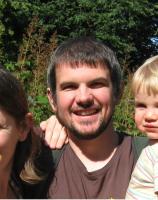Research Overview
My main expertise lies in the physiology of invertebrates of agricultural and economic importance; including sea lice, ticks, flour beetles, earthworms and mites. I am also interested in the Aquaporin family of transmembrane proteins that facilitate water and solute transport across biological membranes and play a vital role in the physiology of animals, plants and unicellular organisms.
I pioneered and patented novel techniques of RNAi gene-knockdown in sea lice (Campbell et al 2009a) and ticks (Ball et al 2009b), demonstrating that reverse-genetics is both a novel and realistic method for studying physiological pathways as well as a possible future control mechanism of pests. We have explored this finding in a key paper (Campbell et al 2010) pioneering gene-knockdown in Varroa mites.
A BBSRC-Link project between University of Aberdeen, bee health company Vita Ltd and the government’s National Bee Unit developed lethal gene-knockdown for the applied control of Varroa mites. This grant included a significant Next Gen Sequencing effort and identified the mechanisms of pesticide resistance in Varroa by SNP calling and RNAseq differential gene expression of detoxifying enzymes. This work led to patent filed applications with the industrial partner, and we continue to develop and commercialise this technology. Recently we have developed a novel molecular toolbox for standardising Varroa mite gene expression assays and provides a gold standard methodology in stabilising degradation of RNA post-collection; which is crucial in evaluating downstream molecular analysis. In addition this grant helped to develop the first neural sequence library from Varroa as well as the first demonstration of RNAi control of neural targets and thus provides the foundation to identify lethal targets and develop future therapeutic intervention strategies.
I have developed a novel off-host in vitro feeding and culturing system for Varroa mites to give unprecedented insight into virus transmission, immune response and feeding physiology funded through the EU-FP7 grant “SMARTBEEs” with 16 partners across Europe; the biggest single honeybee health grant awarded by the ERC (€6M). In 2018 I secured a large 3 year BBSRC research grant (600k UoA FEC).

